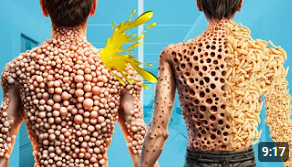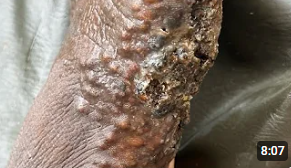THE DYNAMIC NATURE OF POVERTY & HUMAN HEALTH: The UN has long
maintained that poverty is both a cause and a consequence of poor health. Poverty increases the
chances of poor health and poor health, and bad hygiene, in turn, ensnare destitute populations to
remain in destitution. Infectious and neglected tropical diseases kill and weaken millions of the
poorest and most vulnerable people each year.
The UN SDG Report (2018) notes that: “Transitioning towards more sustainable and resilient
societies also requires an integrated approach that recognizes that these challenges—and their
solutions….” The UN has warned world governments that they must reflect on how societies
can be made more resilient while confronting challenges such as tungasiasis. The window of
opportunity is closing in fast. The agency states that: “A good place to start is by establishing
robust water and sanitation infrastructure, ensuring access to clean and affordable energy,
building safe and ecologically friendly cities, protecting ecosystems, and instituting sustainable
consumption and production patterns.” (UN SDG Report, 2018.)
DEONTOLOGICAL ASPECTS FOR BIG PHARMA CONSIDERATION: It has been
often observed in scholarly writing, as well as in popular writing, that global “Big Pharma’s”
social responsibilities to the developing world are insufficiently addressed, and that they must
exercise these responsibilities by investing in research and development related to diseases that
affect developing nations, offering discounts on drug prices, and initiating drug giveaways.
Richard Saynor, Vice President, GlaxoSmithKline (2018) observed: “On the part of
pharmaceutical companies, we have a responsibility to help people gain access to high-quality
healthcare and the medicines that they need, no matter where they live in the world or how much
they can afford.” Other pharmaceutical companies have expressed similar sentiments—but the
hidden epidemics among the global poor in less developed nations still remains hidden.

SELECTED RESOURCES:
1. “WHA66.12 Neglected tropical diseases” (2013, WHA66.12, CC BY-NC-SA 3.0 IGO)
Sixth World Health Assembly, WHO
Neglected tropical diseases (NTDs) include several parasitic, viral, and bacterial diseases that
cause substantial illness for more than one billion people globally. Affecting the world’s poorest
people, NTDs impair physical and cognitive development, contribute to mother and child illness
and death, make it difficult to farm or earn a living, and limit productivity in the workplace. As a
result, NTDs trap the poor in a cycle of poverty and disease.
2. Deka, M.A. (2020) “Mapping the Geographic Distribution of Tungiasis in Sub-Saharan
Africa,” Tropical Medicine and Infectious Disease 5, no. 3: 122.
“The geographic distribution of tungiasis is poorly understood, despite the frequent occurrence
of the disease in marginalized populations of low socioeconomic status.”
3. World Health Assembly, WHO (2021) “Neglected tropical diseases” Information
document.
“Neglected tropical diseases (NTDs) are a diverse group of 20 conditions that are mainly
prevalent in tropical areas, where they mostly affect more than 1 billion people who live mostly
impoverished communities. They are caused by a variety of pathogens including viruses,
bacteria, parasites, fungi and toxins. These diseases cause devastating health, social and
economic consequences to more than one billion people.”
4. Pan American Health Organization, (2022) WHA.12, Washington, DC, January 27, 2022
“On the eve of the first World Day for Neglected Tropical Diseases, the Pan American Health
Organization (PAHO) is urging governments to provide comprehensive and universal care for
the millions of people affected by these poverty-related diseases in the Americas.
Leprosy, dengue, leishmaniasis, schistosomiasis, dog-mediated human rabies, scabies, Chagas
disease, intestinal parasites and trachoma are some of the more than 20 pathologies present in the
region – where they are also known as neglected infectious diseases – afflicting more than 200
million people at risk.
“Preventing and treating these diseases is cost-effective. Strategies to combat them include
bringing prevention, diagnosis and treatment closer to vulnerable communities, as well as
improving their living conditions, such as access to education, drinking water, basic sanitation
and housing,” said Marcos Espinal, PAHO’s director of Communicable Diseases and
Environmental Determinants of Health.”
VIDEOS:
1. “Random video of Laban’s jigger digging”–https://youtu.be/hXewHBcaql8 . Cut and
paste into browser.
2. “Javan’s many painful jiggers dug out”–https://youtu.be/Ptteq_qV8sU. Cut and paste
into browser.
3. “Emmanuel plus five jiggered siblings “–https://youtu.be/dDC3U_5mcO0. Cut and
paste into browser.

Watch full video now 👇


